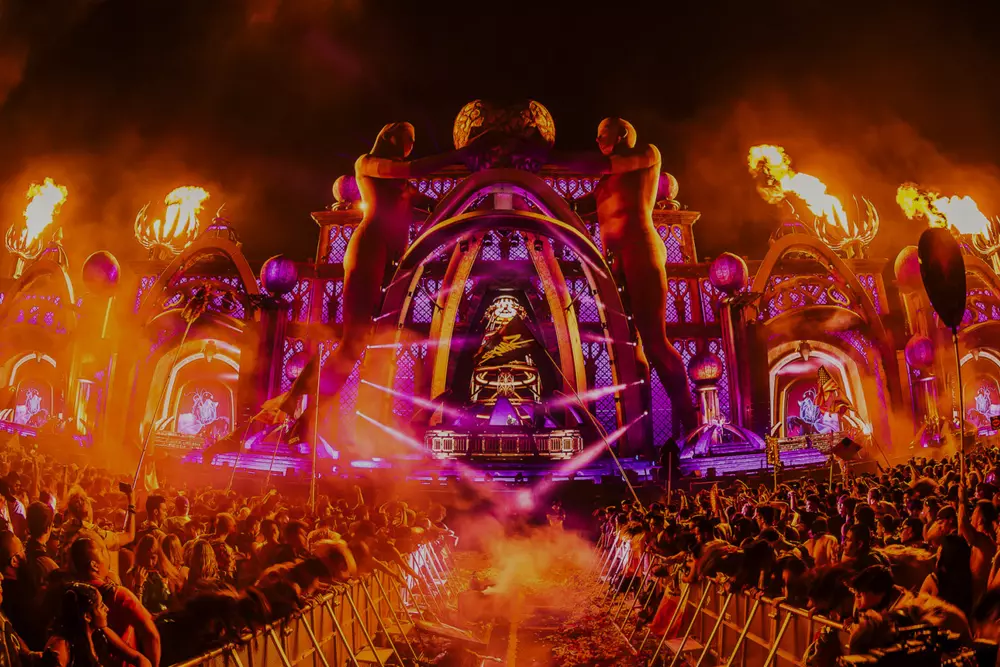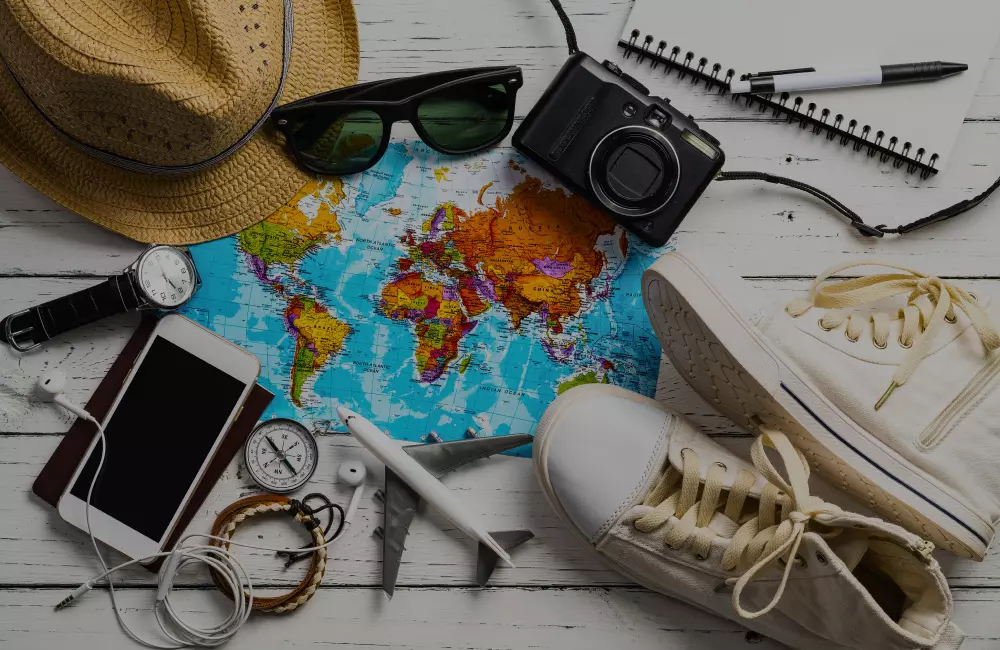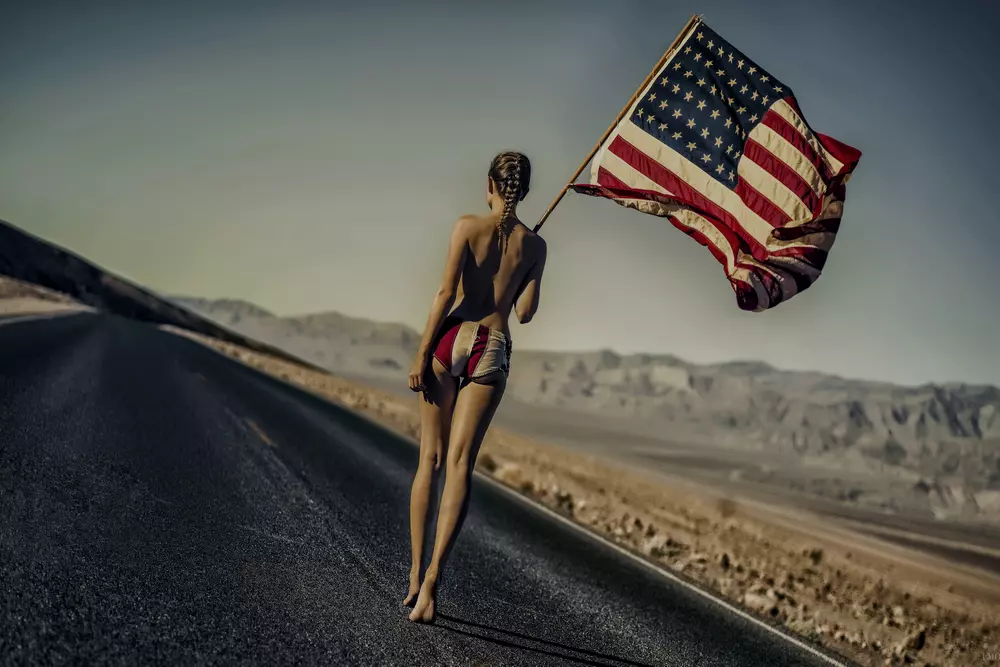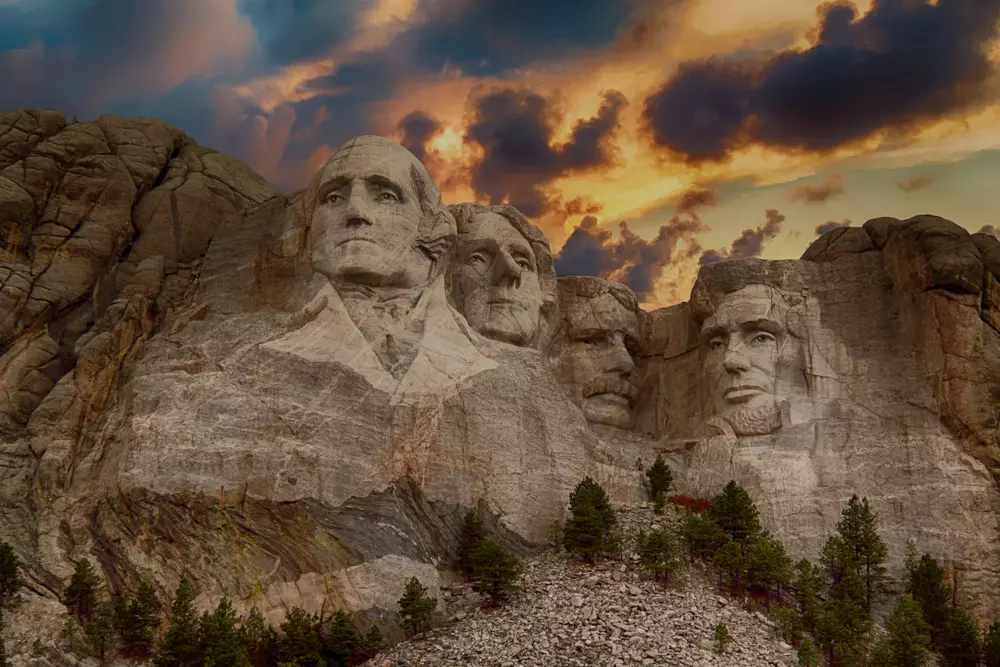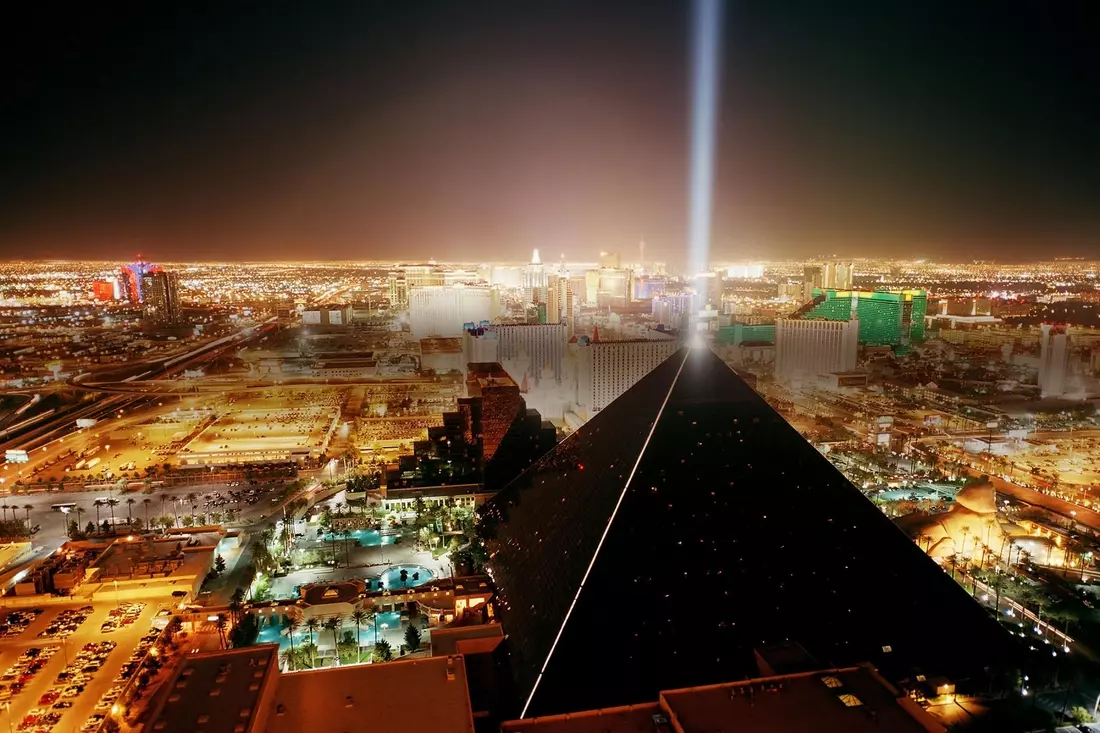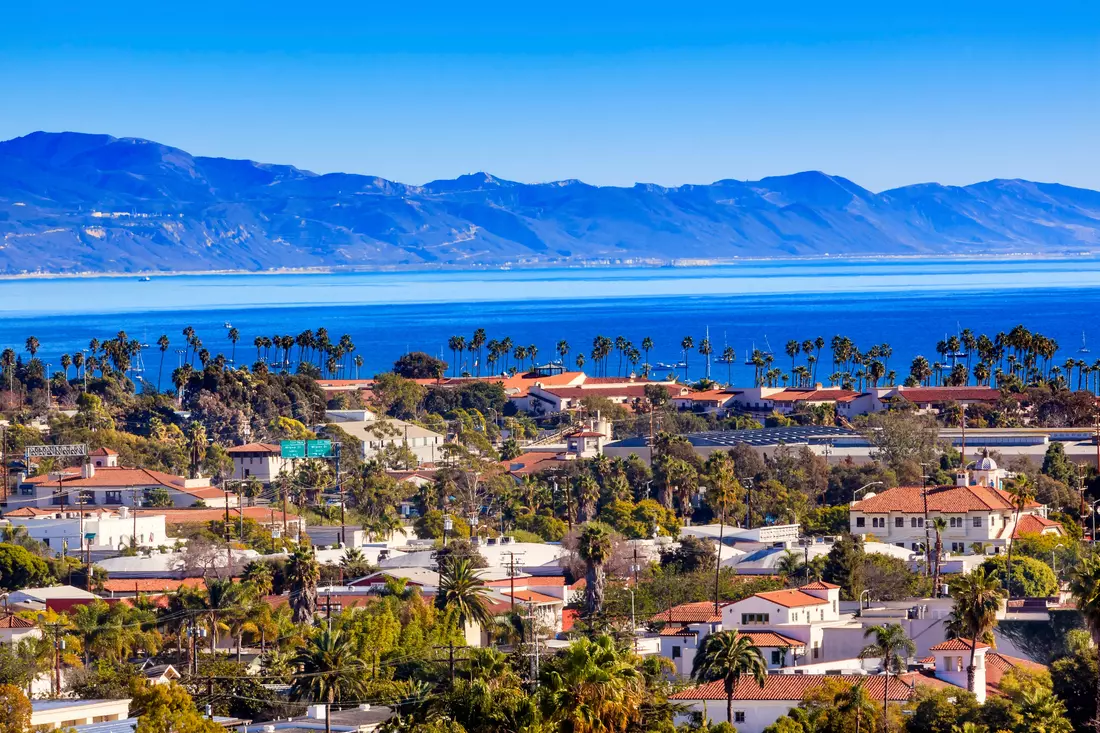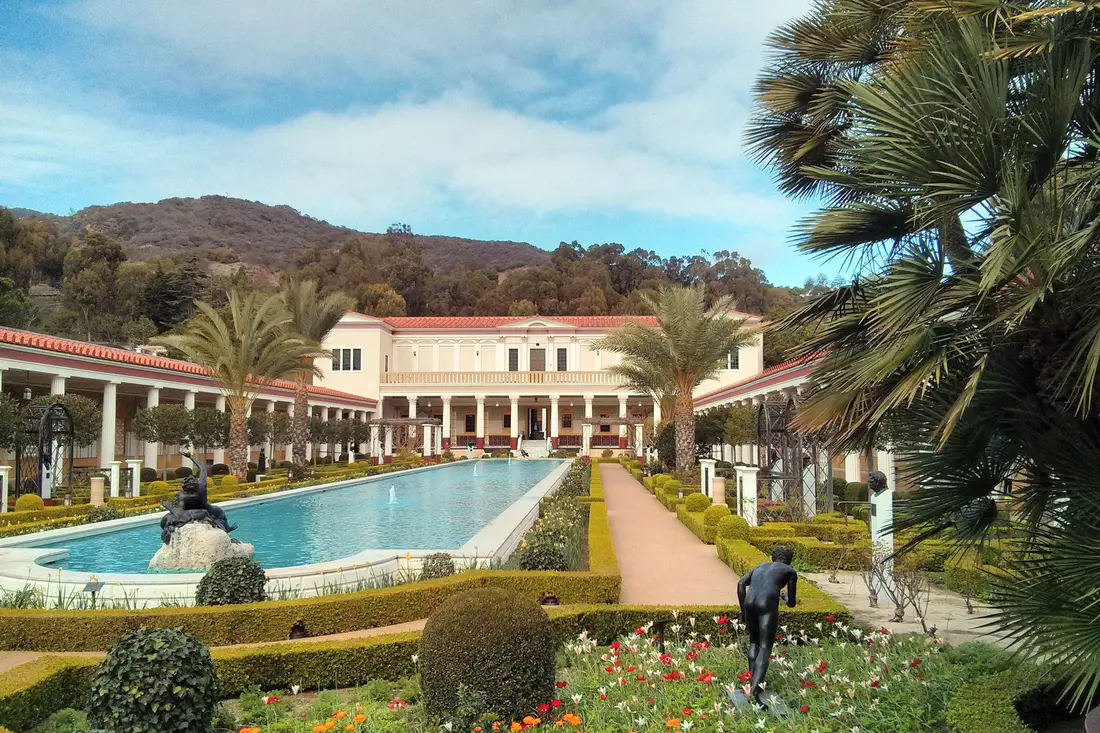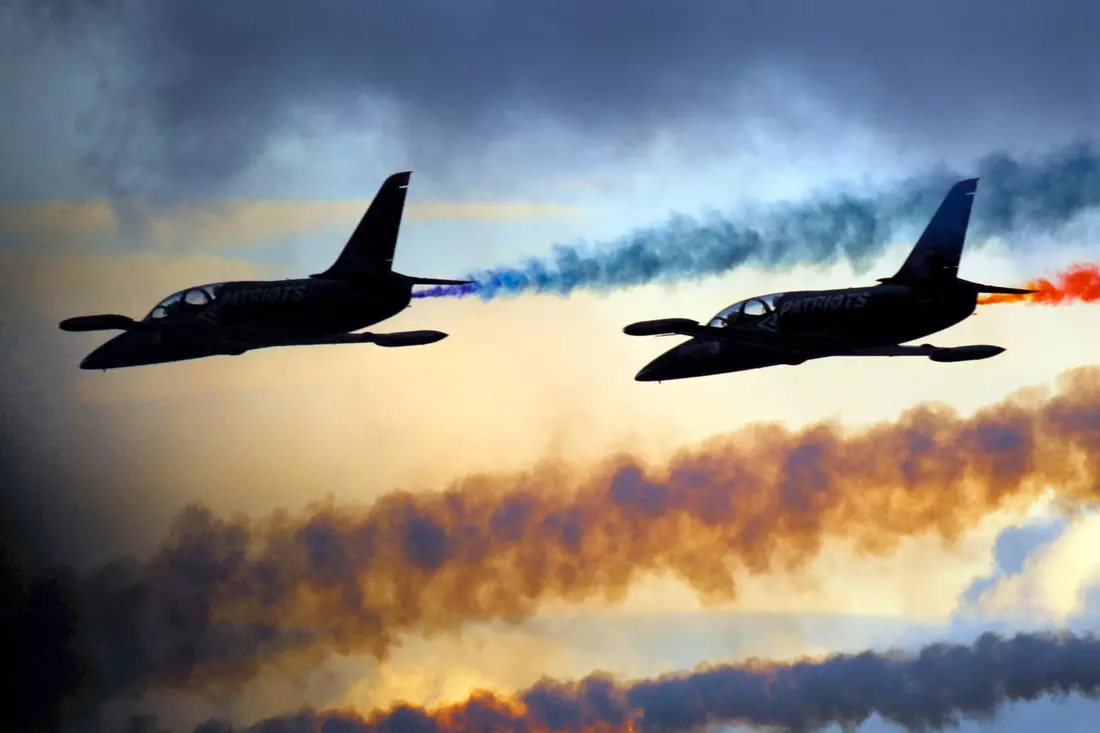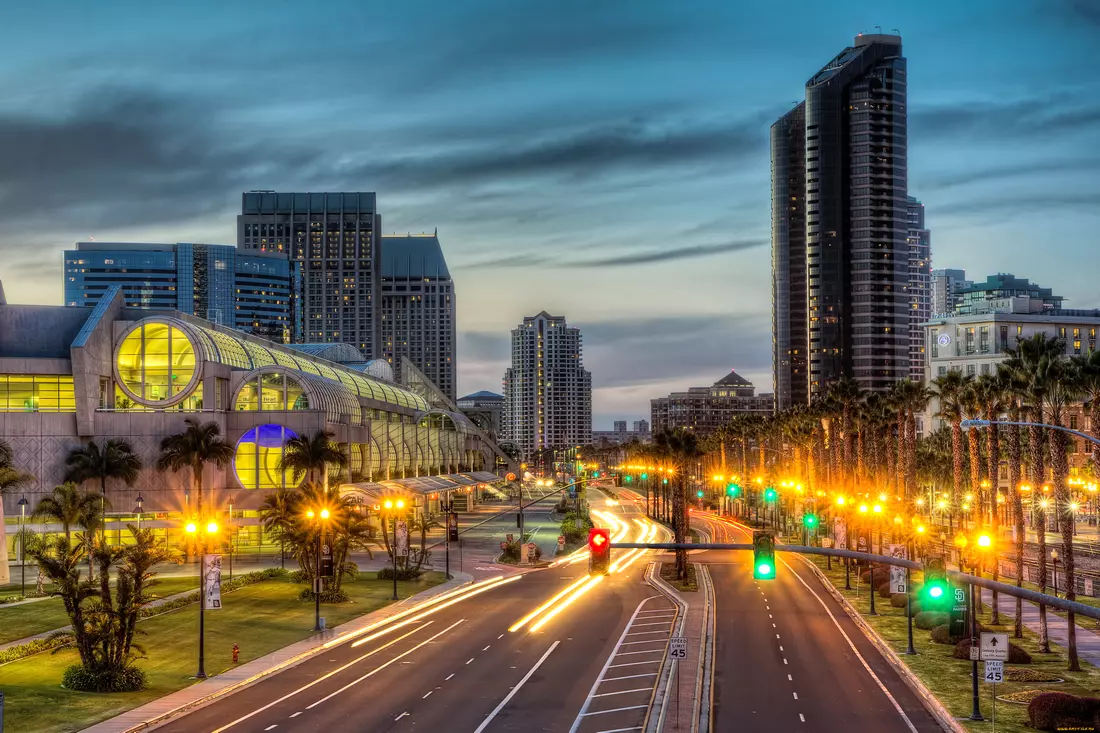The sun blinds your eyes, the air stands still, and beneath your feet lies an endless desert where even the echo gets lost. This is not a scene from a post-apocalyptic movie. This is the reality of one of the most extreme and mysterious corners of the planet — Death Valley.
Here, silence reigns, and only your own pulse can be heard. Time slows down, and the space turns into an endless arena where a human is just a guest. Primal fear and awe walk hand in hand, invoking respect for this harsh land. It's easy to lose orientation here, but hard to lose inspiration. Those who have once visited Death Valley leave a part of their soul behind forever.
And yet, despite its grim name, Death Valley is not about an end. It's about a beginning. A reboot. The chance to look deep into yourself. Leaving here as a different person — that's normal. Leaving here inspired — that's essential. This is a place where there are no masks, no daily hustle, no trivial matters. There's only you, the earth, and the sky. Perhaps it's in such places that real ideas, new meanings, and long-awaited peace are born.
Welcome to Death Valley, a national park of the harsh beauty of California and Nevada, where beyond the ordinary, hidden natural wonders and stories of human courage await.
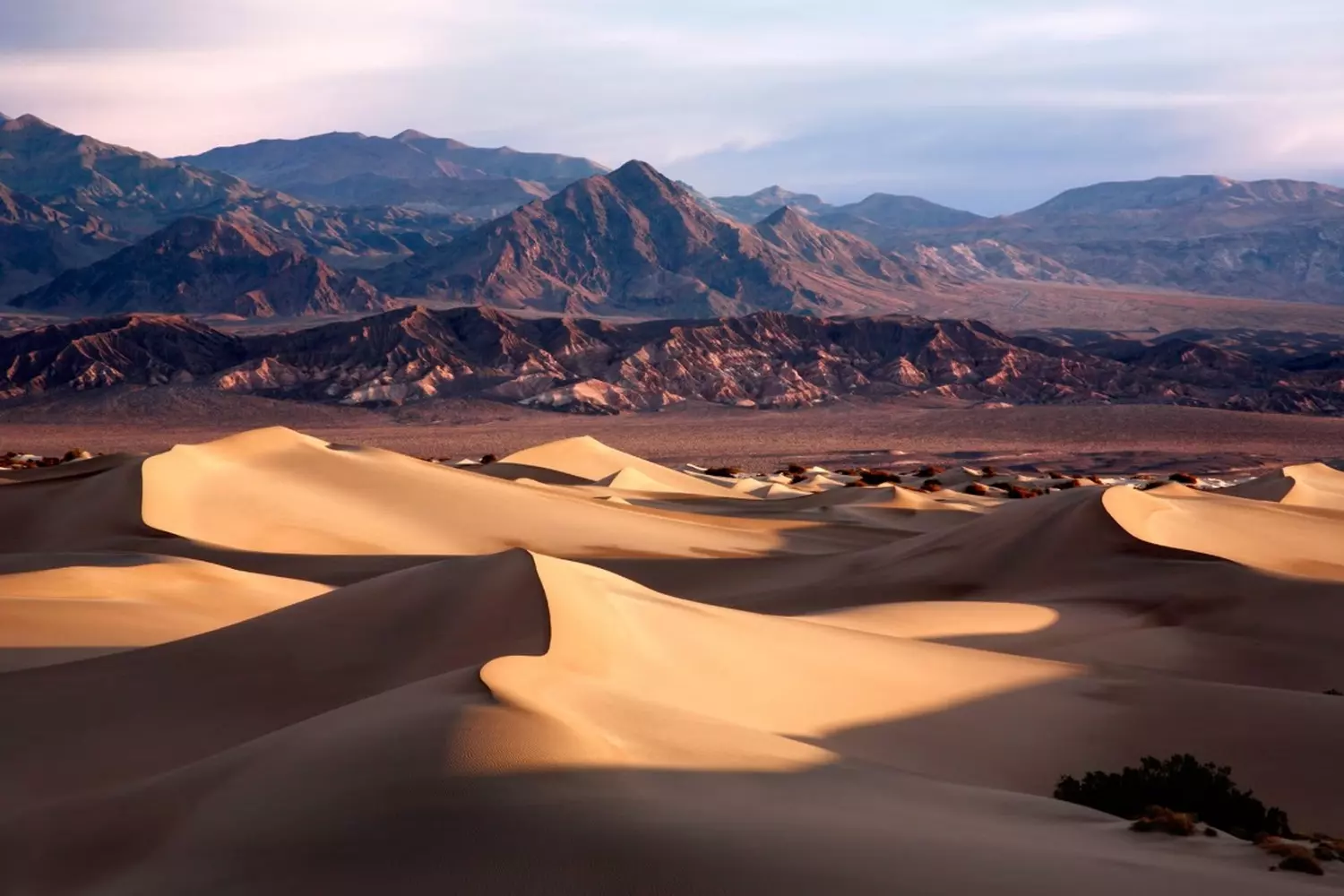
The stones in Death Valley move on their own! On the dry lakebed of Racetrack Playa, tracks from stones weighing up to 300 kg can be seen. Until recently, this phenomenon was considered unexplained.
Where is Death Valley located?
Death Valley (which translates to "Долина Смерти") is located in the southeastern part of California, partially extending into the state of Nevada. It is part of the Mojave Desert and one of the largest national parks in the United States. This is a place where the boundaries between reality and fantasy blur under the weight of heat, wind, and ancient silence.
This is not just a landscape — it's a natural theater where the actors are rocks, sands, and vanishing horizons. Here, you feel like you've stepped onto another planet, and that's why Death Valley is often compared to Mars. However, even on Mars, there are no such contrasts: from icy nights to scorching days, from dry plains to blooming oases in the spring.
Brief Facts That Will Take Your Breath Away
- Location: Southeastern California, partially Nevada
- Distance from Las Vegas: ~200 km
- Area: Over 13,500 sq. km — larger than entire countries such as Jamaica or Lebanon
- Badwater Basin: The lowest point in North America, 86 meters below sea level
- Temperature Record: +56.7 °C (officially recorded in Furnace Creek in 1913)
Everything here is exaggerated — heat, wind, light, shadows. During the day, it feels like the sun is not just shining but pressing down. The air shimmers like a mirage over molten glass, and the sand dunes shift with the desert's breath. But if you stay longer, you start to notice the details. The mountains of colorful minerals at Artist's Palette, the dried salt lakes glistening white and pink, canyons casting shadows of long-lost eras. And all of this — under a silence that almost deafens.
Despite its name, this valley is not dead. In the spring, after rare rains, millions of wildflowers bloom — purple, orange, lemon-yellow. These brief moments of life in a place where everything is tuned for survival are more striking than any blooming coastline. And in winter, you can stand at the foot of a mountain, looking over the arid plain, and see the snowy peaks of the Panamint Range on the horizon. Or stroll across the sands, then through a canyon where the temperature is 15 degrees cooler.
Death Valley will not tell you about itself directly. It whispers. It waits. And if you are not just after a photo by the "Badwater Basin" sign but looking for a true journey into the heart of the elements — a true revelation awaits you. This is the land of ancient times, preserving the breath of the pre-civilization planet. Here, you are alone but not lonely: you are accompanied by the spirits of the wind, shadows, and rocks.
How to Get to Death Valley?
The road to Death Valley is not just a drive to a national park, but a true entrance into another world. Harsh, mesmerizing, and mysterious, these places allure not only with their nature but also with accessibility. The main thing is to choose the right way to get there.
- 01. The most popular route — from Las Vegas
The city of lights is just a two-hour drive from the southeastern boundary of the park. This makes Vegas the number one starting point for most travelers.
- By rental car
Hop in the driver's seat and head along US-95 North, then turn onto NV-373 South, which will take you to the western entrances to the park (via Death Valley Junction and then CA-190). The road is scenic and easy, taking about 2 hours 30 minutes. It's best to leave early in the morning to avoid the heat and enjoy the landscapes. - Guided tour
An excellent choice for those who want to relax and get the most information. Tours from Vegas are usually day trips and include transportation, guided tours, and stops at key points — Zabriskie Point, Badwater, Artist's Palette. You won’t need to worry about the route or water — everything is taken care of for you.
- 02. From Los Angeles — a longer but more scenic route
If you’re starting from Los Angeles, be prepared for a longer journey. The average travel time is about 5 hours (approximately 450 km), depending on the route and traffic.
Take I-15 North, then turn onto CA-127 North through Baker, or take CA-14 and CA-190 if you want to see more mountains and valleys. The last option is more difficult but much more beautiful and memorable. You can also stop at Ridgecrest or Furnace Creek — a good idea if you plan to stay overnight.
Keep in mind: some parts of the route have no phone signal or gas stations — always have a backup of water, fuel, and offline maps. - 03. What about public transport?
Unfortunately, there is no direct public transport to Death Valley. The nearest cities with transportation infrastructure are Las Vegas and Baker, but beyond that, you’ll need to either rent a car or take a guided tour.
However you choose to get to the park — by yourself or in a group — it’s important to remember: Death Valley doesn’t forgive carelessness. Check your gas level, water supplies, sunscreen, and navigation. Otherwise, just trust the road. It will lead you to one of the most astonishing corners of the United States.
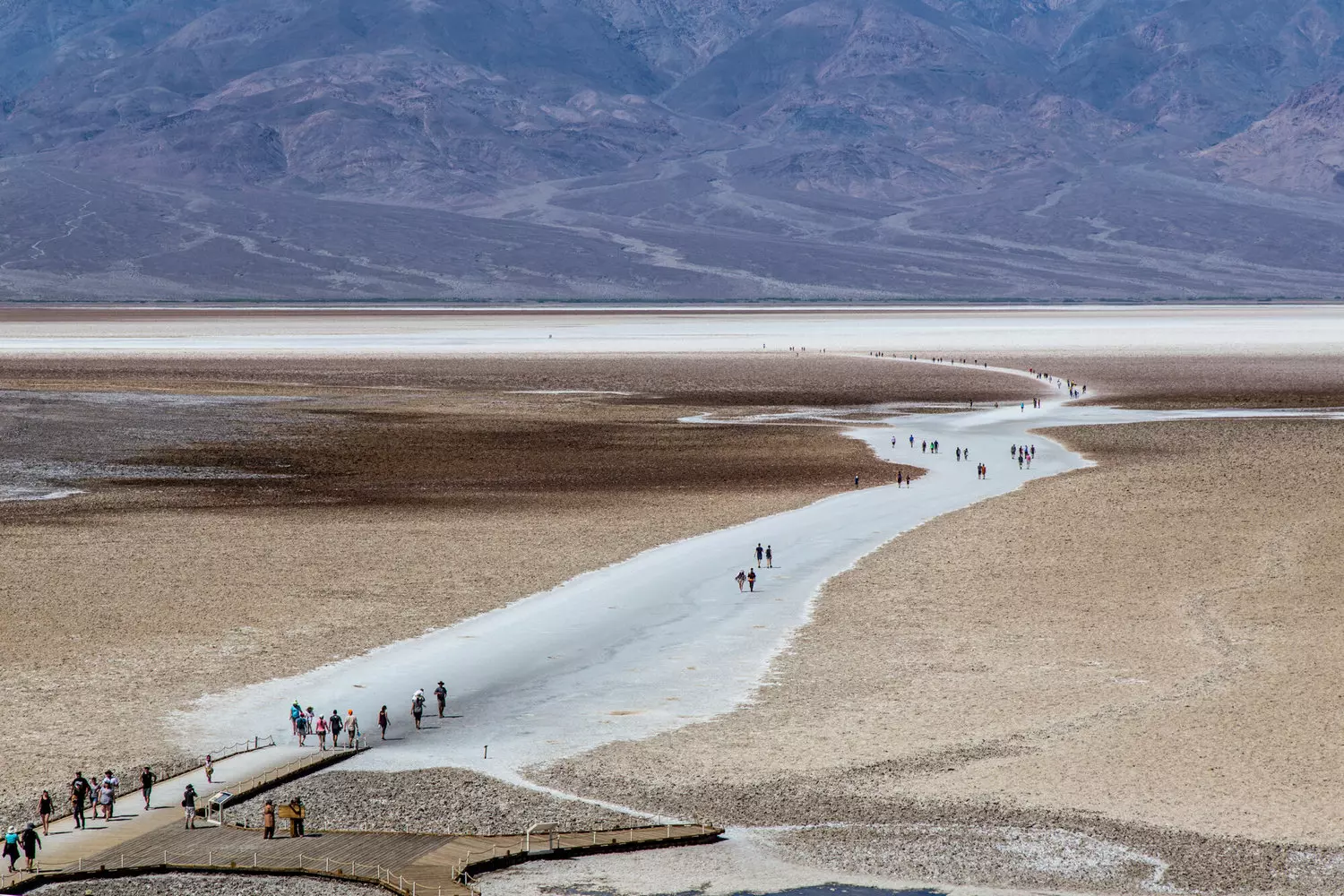
Why is Death Valley called by such a grim name?
Every geographic name has its own story, but the story of Death Valley is more of a legend, one that left its mark not on paper but on human lives. The name of this relentless and majestic valley wasn’t invented by romantics — it was dictated by life itself, more precisely, by the struggle for survival.
During the height of the Gold Rush — in the winter of 1849–1850 — a group of settlers, inspired by dreams of California gold, decided to take a shortcut through uncharted territory. It was a fatal mistake. Instead of a direct road to wealth, they walked straight into a trap. No maps, no knowledge of the terrain, and no sufficient supplies. Just endless, dusty, dehydrated land, surrounded by mountains and scorched by the sun.
The people wandered the desert for weeks, suffering from dehydration, heat, and hunger. Some died. The rest barely escaped, thanks to the help of a local Indian guide named William Manly, who went for help and returned with supplies. When the survivors left the valley, a woman, according to legend, turned around and whispered: “Goodbye, Death Valley.” This phrase became prophetic — and eternal.
More than just a tragedy
The name "Death Valley" is not only a reminder of danger. It’s a symbol, etched into the national consciousness: a trial, endurance, the limits of human potential. Here, a person faces the grandeur of nature in its primal, untamed form.
Paradoxically, beneath this terrifying name lies a triumph of life. In spring, after rare rains, the valley is covered with a carpet of bright wildflowers. Thousands of tourists come here every year, not for fear, but for beauty, for the feeling of absolute silence, for a touch of the unknown.
Death Valley is officially recognized as the hottest place on Earth. In the summer, the air temperature in the valley regularly reaches +50–54°C, and in 1913, the Furnace Creek weather station recorded an incredible +56.7°C — an all-time record. Even asphalt can melt here, and cars can overheat after just a few minutes of standing in the sun.
These are not just extreme conditions — they are a challenge. And within this challenge lies the essence of Death Valley: it demands respect, preparation, and a clear mind.
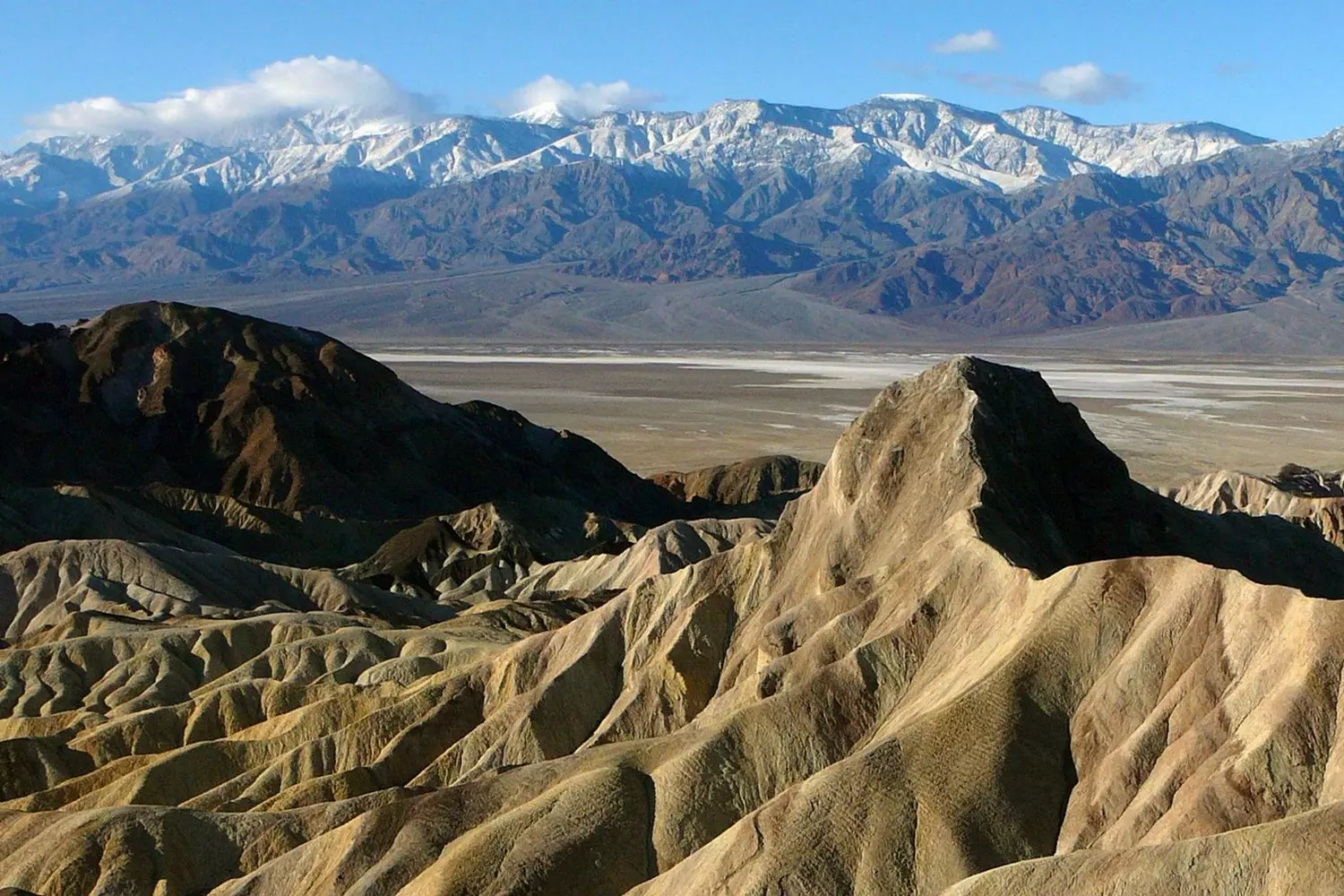
Natural Wonders of Death Valley: Where the Earth Speaks in the Language of Stone, Light, and Time
Death Valley is not just a giant furnace in the middle of a desert. It is a living museum of geological wonders, where each spot feels like a separate chapter of a book written by nature itself over millions of years. Here, you can feel like an explorer on the edge of worlds — between the sky and the abyss, between the Earth's past and its present.
- 01. Badwater Basin: the lowest point on Earth
This is the lowest point in North America: 86 meters below sea level. The name translates to "Bad Water," and it speaks for itself. The salt flat is covered with a crystalline pattern, as if someone carefully carved the earth by hand. The white sparkle of salt blinds you under the sun, and it feels like you're walking on frozen ice, though beneath your feet is a searing desert.
This place is astonishing: in the absolute drought, amidst endless salt flats, there’s an almost inhuman beauty. Silence reigns here, so profound that your ears ring, and the horizon is so boundless that your sense of scale fades away. - 02. Zabriskie Point: an alien landscape
One of the park's most recognizable spots. Zabriskie Point features undulating hills that shimmer in shades of yellow, pink, and ochre. They resemble a frozen wave of time — a geological canvas, where every fold tells of ancient catastrophes and floods.
This place became an icon thanks to the eponymous film by Antonioni, and it’s easy to see why: here, you truly feel like you're on a film set, but not for a movie — more like for another planet. The view at dawn is especially hypnotic, as the sun’s rays turn the dusty ridges into golden sculptures. - 03. Dante’s View: the gaze of giants
Named after Dante Alighieri, this viewpoint sits at an elevation of over 1,660 meters, offering a panorama so breathtaking, both literally and figuratively, that it takes your breath away. From this height, it feels like you're looking at another planet: far below are the white salt flats of Badwater, and in the distance, the purple mountains of the Panamint Range.
This place is for contemplation and silence. Sunsets here are especially impressive: the sky burns crimson, and you feel as if eternity is brushing your shoulder. - 04. Mesquite Flat Sand Dunes: dunes in Hollywood style Hollywood
If you’ve ever seen a film where the characters walk across a desert, it's very likely that it was filmed right here. These dunes are classic, perfectly shaped, as if drawn by an artist’s hand, and they are often used in movies and advertisements. Scenes for Star Wars and other blockbusters were filmed here.
Unlike more dangerous areas of the park, Mesquite Flat is a safe place for barefoot walks at sunset. When the sun sets and the sand cools, the air fills with a golden light, and the dunes seem to come alive. It’s a living dance of wind and sand, one that never repeats itself. - 05. Golden Canyon: a scar in the Earth
This canyon is not just a ravine, but an entire history carved into rock. The colors of the walls — ranging from ochre to bright orange — change depending on the time of day. A walk through the canyon feels like a journey through layers of time. Here, you can touch rocks that are millions of years old.
The trail is easy and suitable even for beginners, and at the end of the path, there’s a view of the Red Cathedral — a giant stone formation resembling a gothic cathedral, only created not by human hands, but by erosion, the sun, and time.
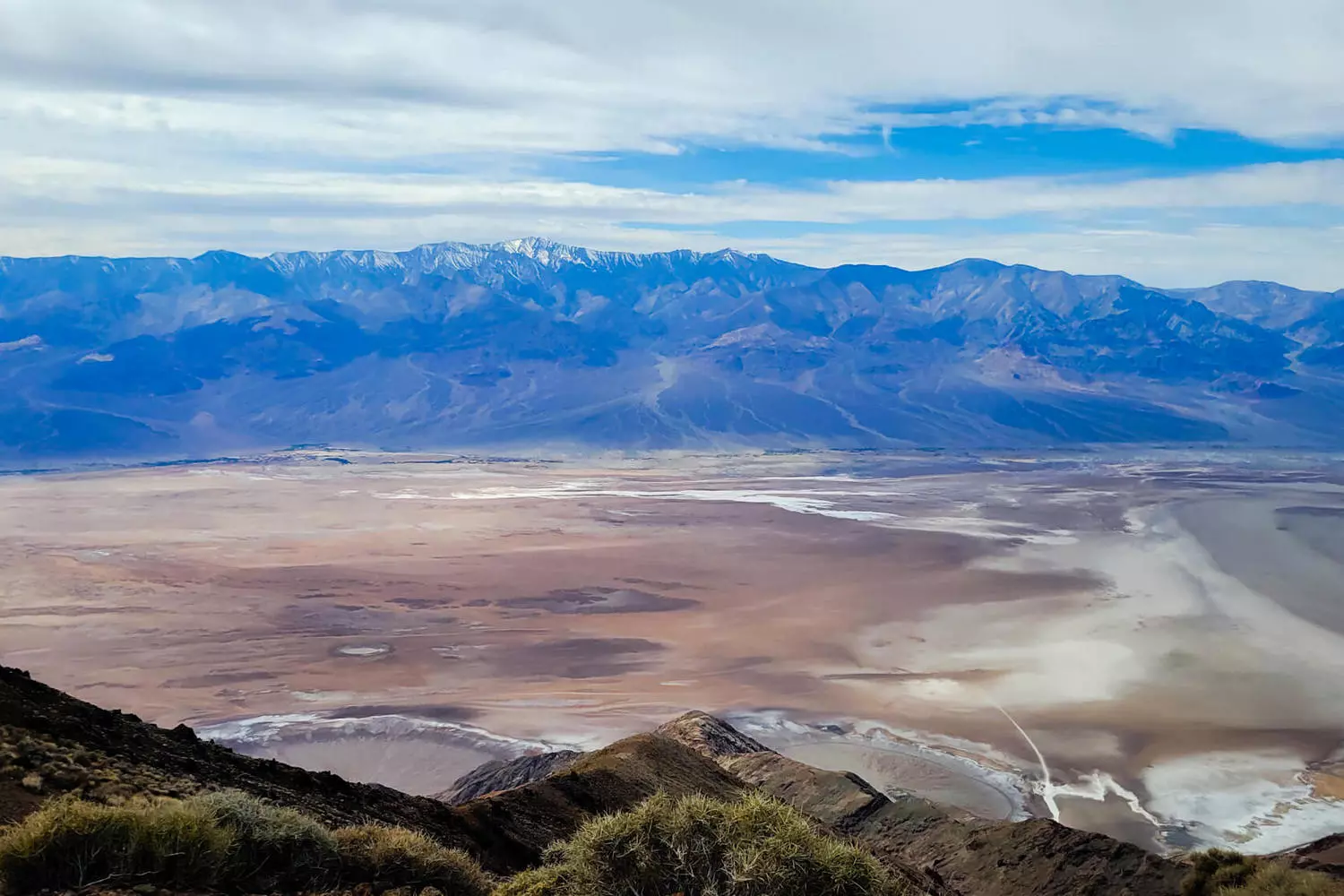
Travel Tips for Visiting Death Valley
Death Valley is not just a journey; it's a true test for anyone who dares to confront its elements. The nature here is harsh and unforgiving, and every step requires respect and preparation. To avoid unpleasant situations and make the most of this unique place, it's important to take care of a few crucial aspects in advance.
- Water supply: your main ally in the heat
Death Valley is an area where summer temperatures can rise to +57°C or even higher. This is officially the hottest place on Earth, and water is your best friend here. At least 4 liters per person per day is the recommended amount to carry. Even if you don’t feel thirsty, water is essential for the proper functioning of your body in such extreme heat.
In addition, it’s important to drink regularly, in small sips, rather than waiting until you feel thirsty. And remember, it's better to carry water in plastic bottles or thermoses that will protect it from overheating. - Check your vehicle before departure
The road here can be not just a challenge but a matter of life and death. Make sure you have a full tank of fuel, as gas stations may be scarce outside major cities and towns. Also, check the level of coolant to prevent your engine from overheating in the hot desert conditions.
A spare tire and repair tools are essential items. The terrain in Death Valley is full of dangerous spots, and even if you stick to the main routes, it's always good to be prepared for emergencies. - Stay on the trails
While Death Valley is alluring with its mysterious landscapes, it's important not to stray from the marked trails. The desert can easily mislead you: granite cliffs and sand dunes create an illusion of vastness and emptiness. But in reality, every deviation from the path increases risks — from losing your bearings to accidents related to overheating or water shortage.
There are specially prepared routes and trails, and sticking to them is key to safety. Don’t forget about your physical condition: long walks in the heat require endurance and caution. - Mobile communication: prepare for disconnection
In some parts of Death Valley, mobile signal is practically absent. This may be unexpected for those who are used to always being connected, but in the desert, the signal often doesn’t reach, and in some areas, there is no standard coverage at all. Therefore, it’s crucial to inform your family and friends about your route and plans.
If you're traveling by car, make sure you have a mobile phone with satellite communication or a radio if you're planning to leave the main roads. - Respect for nature: as the park ranger said
Death Valley rangers often repeat: "We don’t joke when we say 'Death'". And these are not just words — this is a warning. A single mistake, a small misunderstanding with water or weather conditions, and the consequences can be tragic.
Respect nature and its laws, and it will reveal its treasures. Harsh conditions do not mean that the park is not beautiful and amazing, but only if you approach the journey with proper respect and attention. - And finally: be prepared for the unexpected
Death Valley is a place of contrasts, not only in its landscape but also in its character. Everything here can change in the blink of an eye. Be ready for sudden temperature swings, strong winds, and extreme heat. Know that every journey here is not just a vacation, but a truly deep and conscious interaction with nature, full of surprising discoveries and challenges.
When is the best time to visit Death Valley?
Death Valley is a place where nature, in its most brutal yet beautiful form, reveals all its secrets. A visit here is not just a trip, but a true test of endurance. Therefore, to fully enjoy this unique place, it’s important to choose the right time to visit.
- 01. October — April: the best time to visit
If you want to avoid extreme conditions, autumn, winter, and spring are the ideal seasons to visit Death Valley. During this period, the temperature is more comfortable, allowing you to enjoy the beauty of the landscapes without the threat of overheating. October to April is the peak tourist season, but even then, you can still experience the vastness and tranquility here.
Winter in Death Valley can be quite cold at night (temperatures can drop to 0°C), but during the day, the temperature averages around 15-20°C — perfect conditions for hiking the trails and taking photos against the backdrop of majestic canyons and sand dunes. In spring, the park's nature comes to life, and you can see blooming wildflowers that form incredible carpets across the desert. - 02. Spring: the magic of a blooming desert
Spring is an especially beautiful time to visit Death Valley. From February to April, the temperature averages between 20-30°C. This is when the desert literally comes alive: blooming wildflowers (especially in March and April) fill the parks and canyons with vibrant colors. This is the season when nature restores its strength despite the harsh conditions, creating truly magical atmosphere.
The bloom can be short-lived, depending on the amount of rain that falls during the winter period, but if you're lucky, you'll witness carpets of bright flowers against the backdrop of sand dunes and rocks. - 03. Autumn: gentle sun and tranquility
Autumn is one of the most pleasant times to visit Death Valley. September and October offer you soft, not-too-piercing sunlight that won’t overheat the air too much. During this period, daytime temperatures range from 25 to 30°C, and the nights are no longer as cold as in winter. In autumn, there are fewer tourists in the park, which allows you to enjoy the peace and solitude amidst the stunning natural landscapes.
Traveling during the autumn months is also convenient in terms of travel: the air is not too humid, and the temperature allows you to explore the natural beauty without overheating. - 04. Summer hell: the heat that tests endurance
If you want to experience the real heat of Death Valley, then July and August are the months when the temperature here can exceed 50°C. During this time, the valley becomes a true test for the endurance of travelers. Although the number of tourists is low at this time, as the heat can be dangerous and conditions become extreme, it’s important to have plenty of water and sunscreen. Water is not just a convenience, but your salvation from dehydration and heatstroke.
If you decide to visit Death Valley during the summer season, be prepared for extreme conditions. It’s best to plan trips in the early morning or evening hours to avoid peak temperatures.
If you want to enjoy the beauty of Death Valley under comfortable conditions, October to April is your ideal period. Especially spring, when the desert transforms and blooms. For those who want to experience the harsh heat and are not afraid of extreme conditions, summer will provide that opportunity. But remember, such journeys require good preparation and plenty of water!
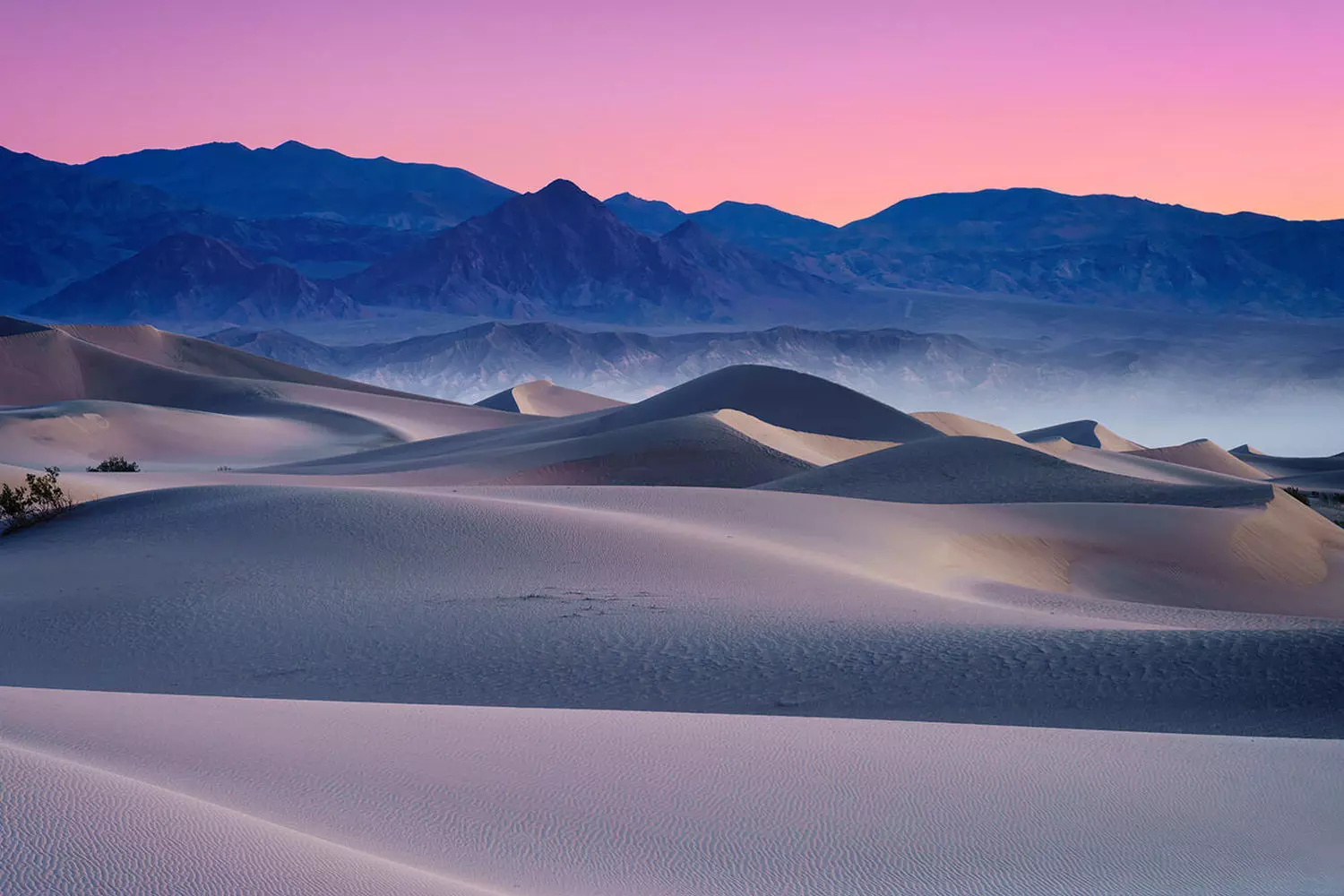
What to see in one day and where to stay?
Death Valley is a place where nature showcases its power and mystery. If you only have one day to explore this unique national park, it’s essential to choose a route that will allow you to see the most vibrant and significant landscapes. This itinerary will give you a complete impression of the diversity of Death Valley and leave you with unforgettable memories.
- Furnace Creek — Starting Point: Visitor Center
First, stop at Furnace Creek — the main location where all tours in Death Valley begin. The visitor center here will help you better understand the local nature and history. The staff will provide advice on routes and offer useful information about the current weather and safety, which is especially important in such an extreme location.
At Furnace Creek, you can also pick up a park map to avoid getting lost in the vast expanses, and learn about the current road conditions, which can change depending on the time of year. This starting point will provide everything you need to embark on your journey safely and comfortably. - Zabriskie Point — Sunrise Viewing
After preparing, head to Zabriskie Point — one of the most famous spots in Death Valley that you can’t miss. It’s here that you should watch the sunrise. At this moment in the morning, the light falls on the alien-like hills, creating unique contrasts and playing with shadows and colors. This place is renowned for its geological feature — the multicolored layers of sedimentary rock that create a stunning visual effect.
It’s worth getting here before sunrise to enjoy the spectacle as the valley gradually comes to life, and the desert landscape begins to bloom. It’s an incredibly beautiful place that leaves a strong impression. - Dante’s View — Breathtaking Panoramas
After the sunrise, head to Dante’s View, located 1,669 meters (5,476 feet) above sea level. This is one of the highest points in Death Valley, offering panoramic views of the entire valley and surrounding mountains. From the top, you’ll be able to see the full diversity of this place — from the arid plains to the majestic mountain ranges.
It’s a pleasant place to rest, breathe in the fresh air, and take stunning photographs from a bird’s-eye view. This spot is perfect for contemplating the vastness and beauty of Death Valley. - Badwater Basin — Walk on the Salt Flats
Next, head to Badwater Basin, the lowest point in North America, situated 86 meters (282 feet) below sea level. This area is famous for its white salt flats, which have cracked from the heat, creating striking geometric patterns on the ground. Here, you’ll not only look at the unusual landscapes but also walk across these salt flats, feeling the unique texture underfoot.
Walking through Badwater Basin will give you a sense of being at the heart of the desert, where conditions can be life-threatening for humans. Yet, despite the harshness, this is where you can witness nature’s power and mystery at its fullest. - Mesquite Sand Dunes — Sunset on the Dunes
End your day at Mesquite Flat Sand Dunes — classic sand dunes that resemble the Sahara. These dunes are the hallmark of Death Valley. Here, you can enjoy the sunset, when the golden rays of the sun illuminate the sands, making them even more vivid and contrasting. At this time, the atmosphere is filled with a special silence, and everything around looks like a painting.
Walking through these sand hills is an opportunity to experience the grandeur of the desert, feel its silence and harmony. This place also offers excellent photo opportunities, making it a perfect conclusion to your journey through Death Valley.
This one-day route through Death Valley will allow you to see its main natural wonders and experience the full diversity of this place. You’ll start at the Furnace Creek Visitor Center, then head to Zabriskie Point to witness the sunrise, enjoy panoramic views from Dante’s View, walk across the salt flats at Badwater Basin, and finish your day at Mesquite Sand Dunes, enjoying the sunset.
Each place you visit will show you Death Valley from a new, unique perspective and leave you with unforgettable impressions of this amazing corner of the Earth.
Where to Stay?
Death Valley is a place that attracts tourists with its mystery and unusual landscapes. Although it’s a remote region, there are several convenient accommodation options in the park that will allow you to fully enjoy its beauty and atmosphere. Whether you prefer luxurious accommodations or an authentic camping experience, Death Valley has something for everyone.
- 01. The Oasis at Death Valley — Luxury in the Desert
The Oasis at Death Valley is perhaps the most luxurious accommodation option in the park. Located in the heart of the valley, at Furnace Creek Oasis, the hotel offers a comfortable stay in the midst of the desert. It has everything you need for a full-fledged retreat after a day of exploration: spacious rooms, a pool with desert views, spa treatments, and restaurants where you can sample local cuisine.
One of the hotel’s main features is its unique location, which allows you to enjoy sunsets and sunrises right from your room. For travelers who want to spend the night in an oasis, this is the perfect spot. The pool with chilled water is especially refreshing in the hot summer months, and you can also swim while enjoying the views of the surrounding mountains and desert expanses.
It’s recommended to book a room in advance, especially during the high season, as the hotel is very popular among tourists looking to experience the desert in comfort. - 02. Stovepipe Wells Village Hotel — Classic Desert Retreat
If you want to feel the atmosphere of the American desert but still enjoy some comfort, Stovepipe Wells Village Hotel is exactly what you need. This hotel is a classic "motel-style" accommodation that perfectly blends into the harsh Death Valley landscape.
The hotel is located in the northern part of the park, near the Mesquite Sand Dunes, making it a great base for exploring the surroundings. It features cozy rooms, a restaurant, a bar, and a shop where you can purchase food and souvenirs. Stovepipe Wells Village Hotel has a unique charm that makes it the perfect place for those who appreciate simplicity and a traditional atmosphere. - 03. Camping — For Lovers of Authentic Experiences
For those who want to experience the true spirit of the desert and enjoy its nature in complete solitude, camping in Death Valley is a great way to immerse yourself in the atmosphere of this unique place. The park offers several campgrounds suitable for both tent campers and those who prefer staying in RVs or campers.
Furnace Creek Campground is one of the most popular campgrounds, located near Furnace Creek. You can set up a tent or park your RV, and there are also showers and restrooms available. However, it’s important to note that during the summer months, temperatures in this area can reach extreme levels, and camping in a tent can be a real challenge.
For a more secluded and primitive experience, you can choose Wildrose Campground, located at an elevation of about 1,200 meters (3,937 feet). This spot is cooler and offers breathtaking views of Death Valley and the surrounding mountains.
If you decide to camp, be sure to prepare carefully for the conditions — bring plenty of water, as well as protection from the sun and insects.
Death Valley offers various accommodation options, from luxurious hotels to authentic campgrounds. Every traveler will find something that suits their preferences in terms of comfort level and the desired experience. Whether you choose to stay at The Oasis at Death Valley, immerse yourself in the desert atmosphere at Stovepipe Wells Village Hotel, or spend the night under the stars in a campground, your stay in this unique place promises to be unforgettable.
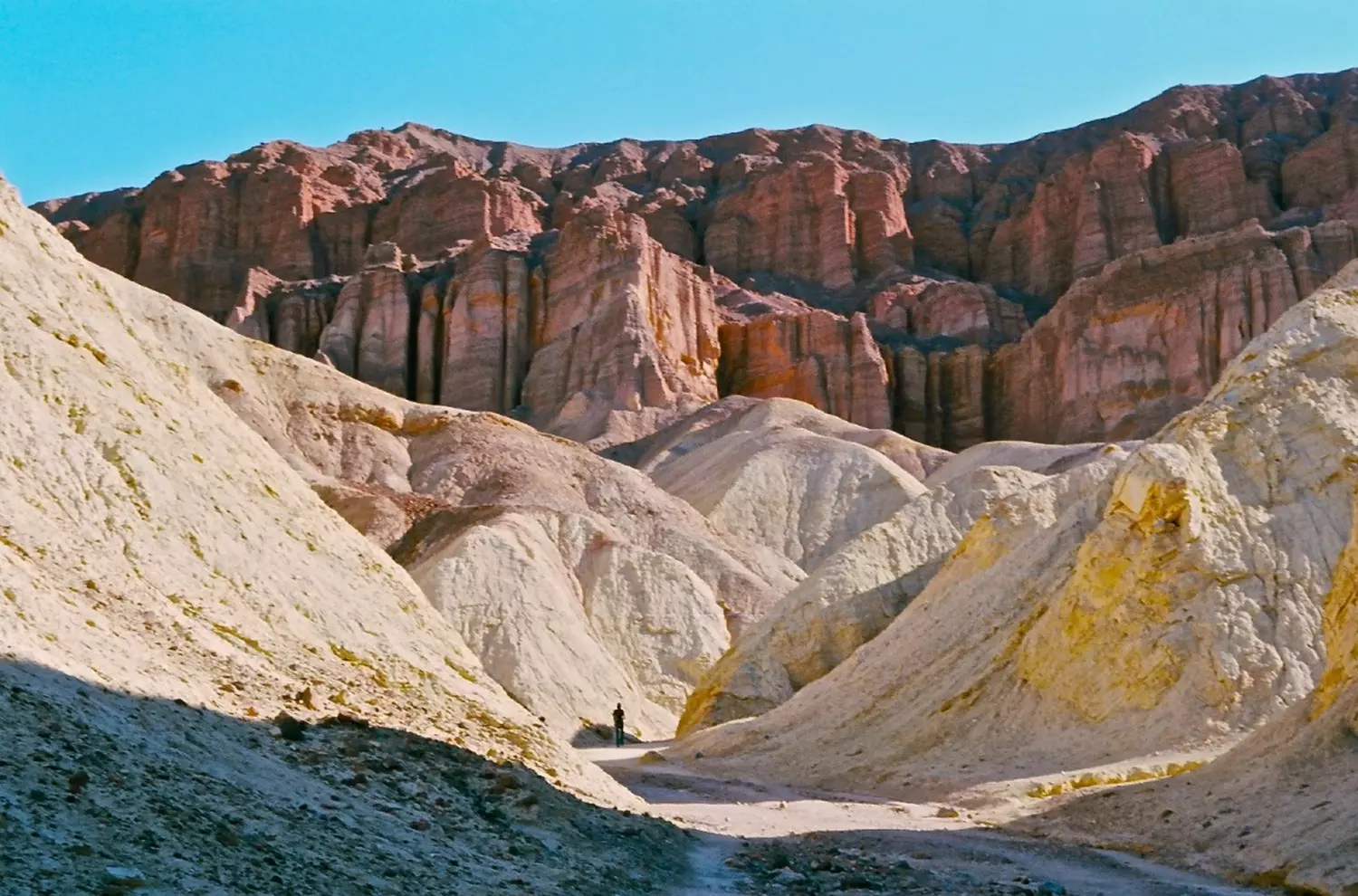
Where the Rocks Crawl and the Sand Sings: The Crazy Wonders of Death Valley
Death Valley, with its mystical atmosphere and harsh landscapes, has long been a source of inspiration for numerous artists, musicians, writers, and filmmakers. It is a place where the desert meets the endless sky, and nature creates incredible scenes that remain in memory for many years. It is here that scenes for iconic films were shot, legendary songs recorded, and works written that embody the spirit of adventure and the unknown.
- 01. Lowest Point in North America
The Badwater Basin lies 86 meters below sea level — the deepest land depression on the continent. Nearby is Telescope Peak (3,368 m), creating one of the steepest elevation changes on the planet. - 02. Racing Rocks of Racetrack Playa
One of the greatest mysteries of the park is the rocks that "move" across the dry lake bed, leaving tracks. Scientists discovered that this occurs due to a thin layer of ice that forms at night and slides under the influence of the wind. - 03. There Was Once a Lake Here
12,000 years ago, what is now desert was home to the ancient Lake Manly, leaving behind vast salt plains. Today, you can see the "Devil's Golf Course" — sharp salt crystals left after the water evaporated. - 04. Underground Catacombs and the "Devil's Hole"
Native Americans spoke of secret caves beneath the valley. One of them is the "Devil's Hole", a limestone sinkhole with water, where the rare fish, the Devil's Hole pupfish, resides. - 05. Volcanic Crater Ubehebe
This 600-meter crater formed 2,000 years ago due to explosions of steam and gas. It resembles Martian landscapes. - 06. Record-Breaking Marathon
Death Valley hosts one of the toughest marathons in the world: 215 km from Badwater to Mount Whitney, which participants complete in two days. - 07. The Park is Larger Than Some Countries
The area of Death Valley is 13,650 km², larger than Jamaica (10,991 km²) or Cyprus (9,251 km²). - 08. It Snows Here
Despite the hellish heat, snow occasionally falls in the park's high-altitude areas (for example, around Telescope Peak) in winter. - 09. "Singing" Sands
In the Mesquite Flat dunes, the sand sometimes emits strange sounds, like a hum or singing. Scientists believe this happens due to the friction of sand grains during the wind. - 10. Hot Springs in the Desert
In Saratoga Springs, there are thermal springs with water temperatures of up to 50°C, where rare species of bacteria and microorganisms live. - 11. "Ghost Town"
The park is home to the abandoned town of Rhyolite, where gold was mined in the early 20th century. Now, only ruins and legends about the miners' curse remain. - 12. Oases in the Desert
Despite the drought, the park has several oases, such as the Ash Meadows Oasis, where palm trees grow and rare birds live. - 13. "Moon Valley"
Due to its unusual landscapes, NASA tested lunar rovers here before the Apollo missions. - 14. Poisonous Plants
The park is home to the creosote bush, which releases toxins that kill other plants around it, allowing it to take over the territory. - 15. Hollywood and Death Valley: Tatooine in "Star Wars"
Death Valley gained worldwide fame for its role as the planet Tatooine in the original "Star Wars" trilogy. When George Lucas was looking for a location to shoot alien landscapes, he chose this desert. The unique sand dunes and desert ridges became the backdrop for the fictional planet where Luke Skywalker was born.
Shooting in such locations adds a special atmosphere to the film: harsh yet beautiful. Even decades later, "Star Wars" fans continue to visit Death Valley to see the iconic landscapes that became symbols of the universe created by Lucas. - 16. Music Inspired by the Desert: The Doors and Red Hot Chili Peppers
Death Valley has also influenced musicians, becoming the theme for several famous songs. The legendary band The Doors sings about travelers, like riders, journeying through endless wastelands, with their path filled with mysticism and dangers, in their song "Riders on the Storm". The harsh desert atmosphere portrayed in the song is ideal for capturing the spirit of Death Valley.
Equally iconic, the band Red Hot Chili Peppers also references this place in their track "Californication". The lyrics evoke images of desert expanses and the pull of this mysterious and harsh land. For musicians, Death Valley became a metaphor for search, adventure, and the struggle against nature. - 17. It Wasn't Just "Star Wars" Filmed Here
Death Valley served as a location for films like: Indiana Jones and the Temple of Doom (scenes with the pass), Mad Max (post-apocalyptic landscapes), and Dune (2021) (desert landscapes). - 18. Deepest Salt Flat in the US
The Badwater salt flat is covered with five layers of salt crystals that form bizarre patterns. - 19. The Park is Full of Optical Illusions
Due to its flat terrain and mirages, the road seems endless, and the mountains appear much closer than they actually are. - 20. Home to the "Immortal" Fish
The Devil's Hole pupfish is one of the rarest species, capable of surviving in water with minimal oxygen content.
Death Valley is a place where nature challenges and creates incredible phenomena. If you plan to visit, remember: the best time to go is from November to March when the deadly heat is absent!
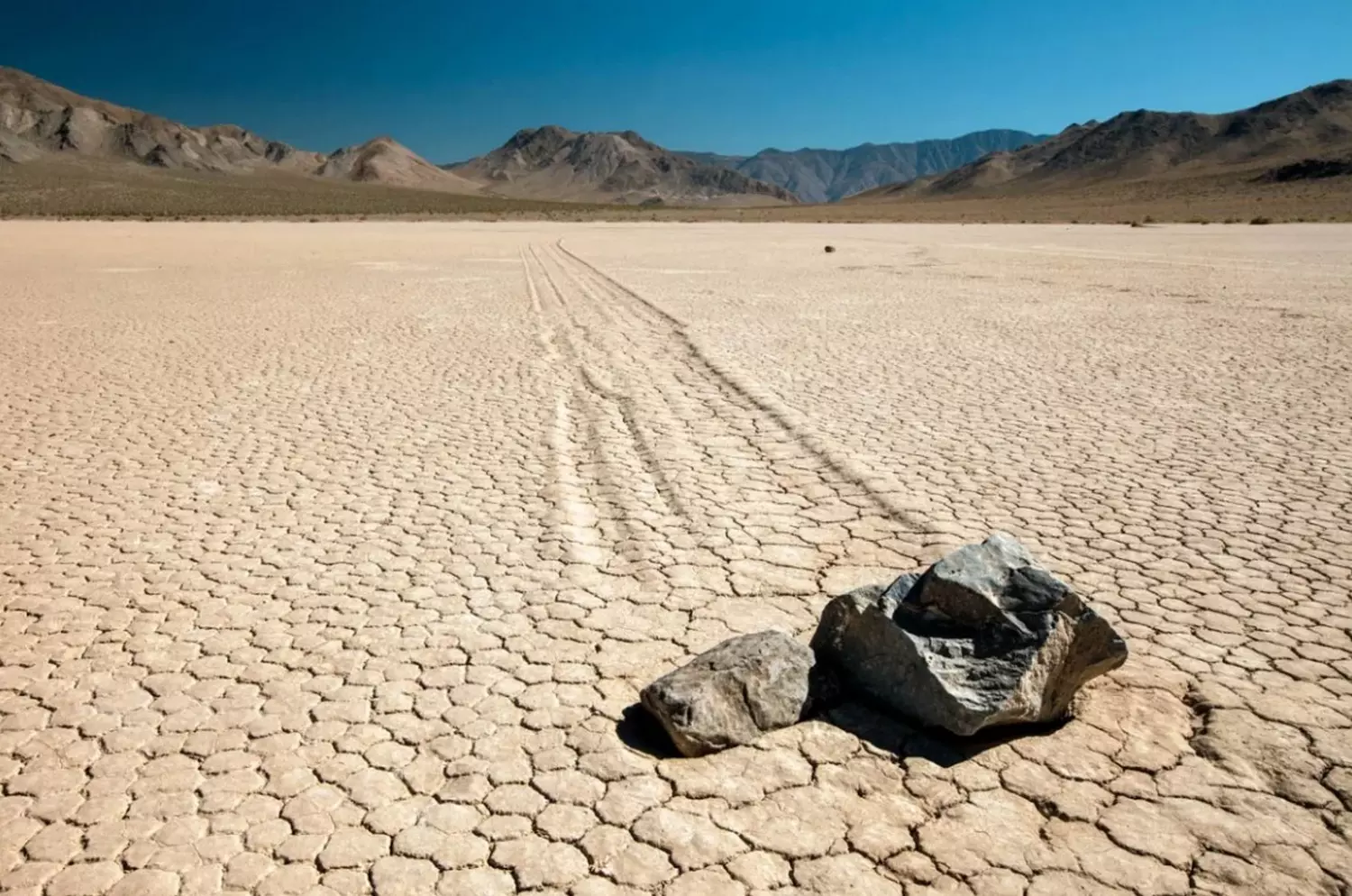
Visit Death Valley with American Butler
The desert can be intimidating. But with the right guide, it reveals its beauty and power. The American Butler company organizes private tours to Death Valley — with comfort, professionalism, and care for each client.
- Personal guide
- Safe route
- Convenient transfer
- Engaging presentation of material
- Assistance with logistics, meals, and accommodation














